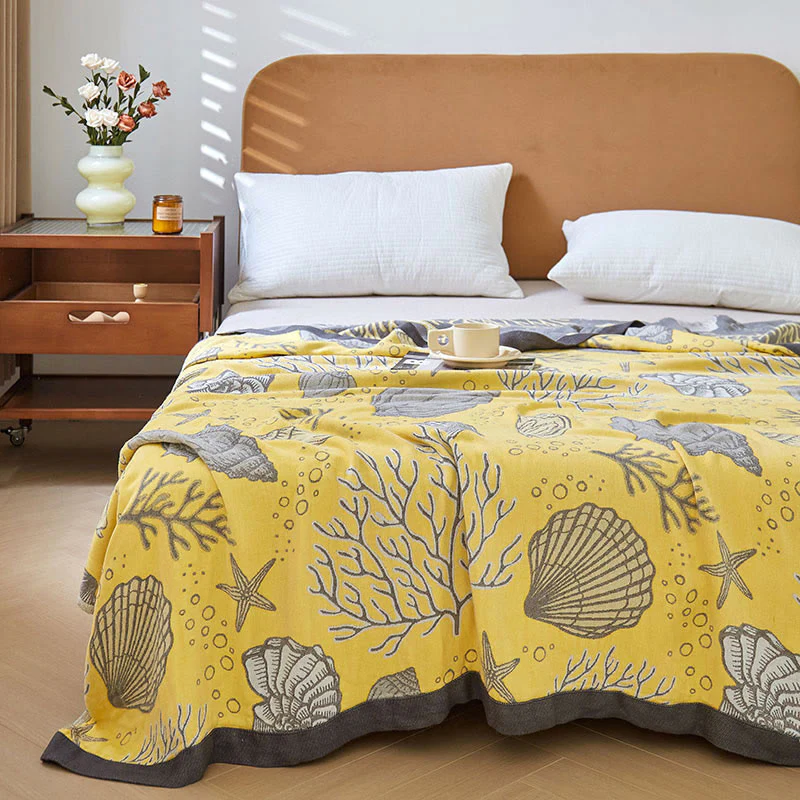This passage will guide you at:
- Introduction
- Natural Qualities of Bamboo
- Comfort and Softness
- Environmental Benefits
- Durability and Longevity
- Deodorization Adsorption Function
- Maintenance and Care
- Allergies and Sensitivities
- Drawbacks and Limitations
- Conclusion
Text leading
Discover the ultimate sleep experience with bamboo fiber quilts—a perfect blend of comfort, durability, and environmental sustainability. Unveil the natural qualities of bamboo that offer unparalleled breathability, moisture-wicking abilities, and much more. Read on to find out why a bamboo fiber quilt could be your next best investment for a good night’s sleep.
Introduction
We’ve all heard that quality slumber is the cornerstone of a healthy lifestyle, right? But here’s the kicker: your quilt plays a pivotal role in this. It’s not just about aesthetics or price; it’s about comfort, breathability, and durability. Over the years, bamboo fiber quilts have become more and more popular. This is inseparable from its unique quality and ecological benefits.

Natural Qualities of Bamboo
One of the most remarkable natural qualities of bamboo is its breathability. Bamboo fibers have a unique cellular structure that allows for excellent air circulation. The breathability of bamboo helps to regulate body temperature by allowing excess heat to escape, thereby reducing the chances of overheating.
Another outstanding quality of bamboo is its moisture-wicking ability. Most of us have experienced those uncomfortable nights when we wake up sweating. With bamboo, that discomfort can be dramatically reduced. The fibers in bamboo have natural properties that draw moisture away from the skin, distributing it across the surface of the fabric where it quickly evaporates. This ensures that you remain dry and comfortable throughout the night.
Comfort and Softness
The texture of the fiber quilt is similar to the softness of silk and the breathability of cotton. Slipping into a bed adorned with a bamboo fiber quilt feels like a warm embrace by a cloud. It is soft and silky on the skin. Beyond the opulent texture, what sets bamboo fiber quilts apart is their adaptive comfort. When you’re too hot, the quilt helps to dissipate heat and wick away moisture, ensuring that you’re not sweating in your sleep. Conversely, when the temperature drops, the fibers act as insulators, retaining heat to keep you warm. The far-infrared emissivity of bamboo fiber is as high as 0.87, and its heat storage and warmth are much better than traditional fiber fabrics. Warm in winter and cool in summer, bamboo fiber quilt is definitely a quilt worthy of high investment.
Environmental Benefits
One of the most compelling reasons to choose bamboo fiber quilts over other types of quilts is the astonishingly rapid growth rate of the bamboo plant. Unlike hardwood trees that can take decades to mature, bamboo can grow up to three feet in just 24 hours und er optimal conditions. This makes bamboo an incredibly renewable resource, as it can be harvested every 3-5 years without causing soil degradation or other environmental issues. This not only conserves soil but also minimizes land use, contributing to more s sustainable agriculture.
In addition, bamboo has an extremely low water requirement. The plant can thrive on natural rainfall alone, negating the need for artificial irrigation. This stands in stark contrast to cotton, which is notoriously water-intensive, requiring thousands of gallons of water to produce just one pound of cotton fiber. So the next time you’re in the market for a new quilt, consider the environmental benefits of choosing one made from bamboo fibers.

Durability and Longevity
When it comes to durability, bamboo fiber quilts are a league of their own. The inherent strength of bamboo fibers contributes to the resilience and long-lasting nature of these quilts. Bamboo is often referred to as the “steel of the plant world” due to its exceptional tensile strength. This translates into quilts that can withstand significant wear and tear, resisting fraying, stretching, and pilling. Ideal for families with young children and pets. And bamboo fiber has unique resilience. Unlike other quilts that may lose their shape or become lumpy over time, bamboo quilts maintain their quality and integrity for years. Therefore, you will find that fiber quilts have a long service life.
Deodorization Adsorption Function
Nobody wants their bed to harbor unpleasant smells. It’s really too bad if your bed has an unpleasant smell because it might keep you up at night. Fortunately, the bamboo fiber quilt has a unique deodorizing adsorption function. The special ultra-fine microporous structure inside the bamboo fiber makes it have a strong adsorption capacity. It can absorb harmful substances such as formaldehyde, benzene, toluene and ammonia in the air, and eliminate bad odors. Make your sleeping experience more enjoyable.
Maintenance and Care
Bamboo fiber quilts are easy to maintain and does not require any special care or complicated washing instructions. Bamboo fiber products have low fiber cohesion, so it is recommended to choose gentle washing and fine washing procedures. Suitable for hanging to dry. And the natural elasticity of bamboo fiber helps the quilt maintain its original size even after repeated washings. It also means you don’t have to worry about changing comforters due to size issues. This is a cost-effective and sustainable option in the long run.
Allergies and Sensitivities
Bamboo fibers naturally resist dust mites, molds, and other common allergens. This resistance is due to a bio-agent called “bamboo kun,” which makes the plant inhospitable to microorganisms and fungi. And the fibers are smooth and round, lacking the sharp spurs you might find in other materials, which can irritate the skin. Contributes to its skin-friendly properties. For people suffering from allergies, respiratory and skin diseases, bamboo fiber quilts can provide a cleaner, more anti-allergic sleeping environment. On top of that, Ownkoti‘s bamboo fiber is double-sided jacquard with a delicate ginkgo leaf pattern. The three-dimensional texture is full.

Drawbacks and Limitations
Although bamboo fiber quilts have a range of advantages from comfort to environmental protection, they are not completely without disadvantages. On the one hand, bamboo fiber quilts are more expensive than traditional cotton or polyester quilts. The manufacturing process for bamboo fibers is generally more complex, which increases the overall price. Might not be friendly for those on a tight budget. On the other hand, it is not suitable for high temperatures and high mechanical washing. Bamboo fibers tend to shrink at high temperatures.
Conclusion
The beauty of bamboo fiber quilts lies in their blend of comfort, durability, and environmental responsibility. From the luxurious texture to the thermal regulation, they offer a sleep experience that’s hard to beat. While they may show signs of wear over time, the pros unquestionably outweigh the cons. If you value comfort, sustainability and quality, investing in bamboo fiber quilts must be a highly rewarding investment.

 The Shiba Inu That Made Dogecoin an Icon
The Shiba Inu That Made Dogecoin an Icon How to Select the Perfect Western Commode?
How to Select the Perfect Western Commode? The Role of Analytics in Predicting Basketball Games
The Role of Analytics in Predicting Basketball Games Pradhan Mantri Kaushal Vikas Yojana 2024 Online Application, Courses List, Eligibility Criteria and All You Need To Know
Pradhan Mantri Kaushal Vikas Yojana 2024 Online Application, Courses List, Eligibility Criteria and All You Need To Know Lakhpati Didi Yojana 2024: Online Application, Eligibility Criteria, Benefits and All You Need To Know
Lakhpati Didi Yojana 2024: Online Application, Eligibility Criteria, Benefits and All You Need To Know Janani Suraksha Yojana 2024: Online Registration, Benefits, Eligibility Criteria, and All You Need To Know
Janani Suraksha Yojana 2024: Online Registration, Benefits, Eligibility Criteria, and All You Need To Know How to Choose the Best Online Stock Broker Trading App?
How to Choose the Best Online Stock Broker Trading App? Melbet – The Ultimate Destination for Indian Bettors in 2024
Melbet – The Ultimate Destination for Indian Bettors in 2024